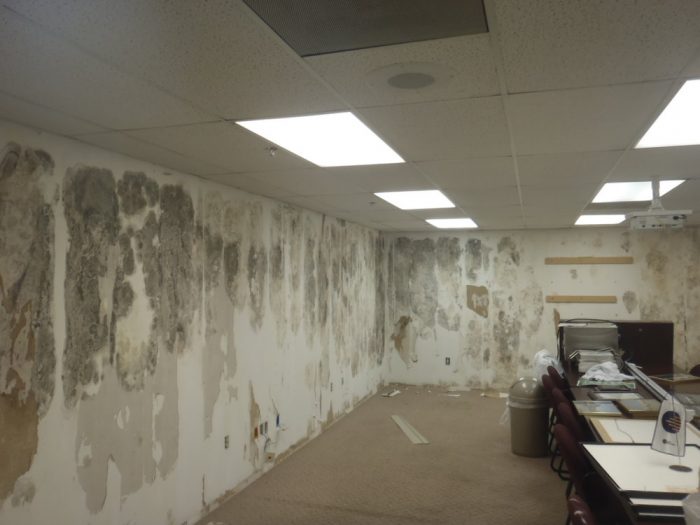The term “asthma trigger” is used to describe anything that causes asthma symptoms in patients. We tend to associate asthma flare-ups with substances like tobacco smoke, but they can also be triggered by physiological or emotional factors. Indoor air quality (IAQ) initiatives are especially beneficial for asthma patients, since many triggers are kept under control when IAQ is given priority, which positively affects productivity.
Common asthma triggers found in the environment can be classified into irritants and allergens. The difference is that irritants affect everyone regardless of asthma, while allergens only affect those susceptible to them. For example, ozone is an irritant because all humans are affected when exposed to a high enough concentration, while pollen is an allergen because reactions vary by individual.
This article will provide a list of many known asthma triggers, and how to minimize exposure.
Tobacco Smoke
The negative health effects of tobacco smoke have been well studied and documented, affecting both smokers and those around them (secondhand and thirdhand smoke). Tobacco smoke has been linked with a wide range of health conditions, including asthma, cancer and heart disease. It irritates the respiratory system even with brief exposure, and can cause permanent lung damage over time.
Asthma patients should not smoke under any circumstances, and should also stay away from any location where cigarettes are being consumed. Offices and buildings where an asthma patient works should be non-smoking zones, since tobacco smoke can get trapped in clothes and furniture. This means smoking can affect asthma patients even if they were not present while someone was smoking.
Strong Smells and VOCs
Although strong smells and VOCs are separate asthma triggers, they are closely related because they often come from the same sources: cleaning products, air fragrances, cosmetics, combustion appliances and paints, to name some examples. In many cases, the concentration of these substances in the air can be minimized with adequate ventilation. There are also situations where the best recommendation for asthma patients is avoiding interior spaces, such as when a room has been recently painted.
If any refurbishments have been carried out, or new furniture has been bought, make sure the air quality in your office is good for everybody before resuming work.

Ensure proper ventilation is in place when your office is being cleaned.
Industrial Chemicals and Other Workplace Substances
Many substances found in work environments are asthma triggers. They are not normally a cause of concern in an office of a non-industrial building, but may be a risk factor for asthma patients in professional fields when these substances are used. Industrial process chemicals are an example, as well as organic compounds of animal or vegetable origin.
Dust and Dust Mites
These two allergens are normally found together. There is a misconception that dust mites feed on dust, but actually they only live among dust particles; they really feed on dead skin and other organic matter shed by humans and pets. The best way to control dust mites is preventing the conditions they need to thrive: an habitat, a food source and moisture.
- Dust should be cleaned frequently, and objects and furniture that are habitats for dust mites should be avoided: carpets, and desk chairs with not-washable cushions.
- Dust mites die off if relative humidity falls below 50%. Humidity monitoring, ventilation controls and a dehumidifier can help you achieve this.
Mold and Mildew
- Mold and mildew are types of fungi that can grow quickly if indoor humidity is not controlled effectively. Although they cannot move, their spores easily become airborne and cause allergies. Mold and mildew also produce mycotoxins, a potential asthma trigger.
- Spores are nearly impossible to eliminate completely, since they are microscopic and found everywhere. Therefore, cleaning mold and mildew is not a permanent solution, since they will simply grow back from the spores released. The only long-term solution is keeping humidity under control, which also brings the benefit of eliminating dust mites.
- Many air purifiers are capable of killing spores, which helps control the spread of mold and mildew. However, dead spores can still cause allergic reactions, so the best approach is preventing fungal growth in the first place.

Severe mold infestation in an office.
Animal Dander
Warm-blooded animals produce a substance called pet dander or animal dander, which is composed of dead skin cells and other organic matter they shed. Pet dander is an asthma trigger by itself, and is also a food source for dust mites (another asthma trigger).
The existence of animal dander is not common knowledge. There is an erroneous belief that the allergic reaction is caused by fur or feathers, and that trimming pets reduces allergies. Unfortunately that is not the case: even a bald animal produces dander.
If an asthma patient and a furry or feathery pet share an indoor space, the only option is to avoid exposure. The pet should stay away from their working area and furniture, and should be bathed and cleaned frequently to minimize the build-up of pet dander.
Cockroach Allergens
The organic matter shed by cockroaches has effects similar to pet dander, with the potential to trigger allergic reactions and asthma symptoms. Also consider that cockroaches often die away from sight, and their decomposing bodies release allergens as well. The recommended strategy against cockroaches is similar to that used against dust mites: remove their habitat and food sources. There are also many types of roach traps and poison available.
Pollen
Pollen is an allergen emitted by plants** during their flowering season, so asthma patients should avoid going outdoors when there is plenty of pollen in the air. Ingress of outdoor air should also be avoided as much as possible, unless it is properly filtered.
Many air quality organizations keep track of pollen levels and publish them online. If this data is available where you live, check pollen before going outdoors.
Indoor plants bring various benefits, such as increasing the oxygen content in the air and filtering out some pollutants. However, flowering plants can also bring issues due to pollen release. Non-flowering plants with abundant and large leaves are preferred, since they have the highest air-filtering area while being pollen-free.

Plants are the best pieces of decoration, always trendy and help you breathe healthier air.
**Updated November 2019.
The decades-old claims about the power of plants to improve indoor air quality might be totally wrong, according to a recent study by the Drexel University. Researchers say that the experiments conducted in previous studies were done in lab-controlled environments.
According to their findings, in the real world, hundreds of plants would be required in a single room to come close to the air-cleaning capacity of just one air purifier.
Although we should be cautious about the findings of this study, it casts reasonable doubts on a generalized belief, and opens up a new and interesting perspective on this topic.
Outdoor Air Pollution: Particulate Matter, Ozone and Smog
Particulate matter, ozone and smog can achieve very high concentrations in urban settings, especially during peak traffic hours or sunny days. The best recommendation for asthma patients is avoiding exposure to outdoor air when these substances reach high concentrations. Fortunately, many governments throughout the world monitor them actively and publish air quality indexes, allowing citizens to take the necessary prevention measures.
Keep in mind that particulate matter may also be released from indoor appliances, especially when they have an exposed flame. In addition, some air purifiers release ozone into the air, which may trigger asthma symptoms.
Weather Conditions
Asthma triggers change depending on the patient, as previously mentioned, and some individuals are susceptible to sudden weather changes or extreme conditions. Some common asthma triggers associated with the weather are high humidity and low temperature. Seasonal changes may also affect some people, even if there is no extreme weather.
To avoid asthma flare-ups due to cold weather, use winter clothes and minimize exposure to outdoor environments. A well-designed HVAC system is of great help, since it keeps indoor temperature and humidity levels within a healthy and comfortable range.
Asthma Triggers You Might Have Never Thought Of
All the asthma triggers described so far are related with the air in one way or another. Therefore, it is possible to mitigate or eliminate them with proper ventilation and indoor air quality (IAQ) measures. However, there are also many asthma triggers that do not depend on the air, remaining a risk factor even with ideal IAQ conditions.
Physical Exercise
Many asthma patients experience a worsening of symptoms with exercise. This can be mitigated or prevented by taking medication in advance, doing warm-up exercise, cooling down at the end, and avoiding exercise altogether if asthma symptoms have already been triggered by another cause. Air quality is always important when exercising because it improves breathing, but especially so for asthma patients.

Meeting rooms may become asthma triggers because of the stalled air within as well as the strong feelings sometimes shared.
Strong Emotions
Although emotions themselves do not trigger asthma, they tend to change the breathing rhythm, which can potentially cause a flare-up. Breathing exercises are an excellent way to prevent asthma attacks when under stress or any other strong emotion. Keep in mind that positive emotions also cause breathing changes, which means that laughter and yelling can trigger asthma as well.
Make It Easy
Although the list of asthma triggers is long, some strategies are effective against multiple triggers at once. For example, monitoring and controlling indoor air humidity is effective against all living asthma triggers - dust mites, mold, mildew, etc. With respect to non-living triggers such as VOCs and particulate matter, two complementary approaches can be used:
- Minimizing indoor sources of pollution.
- Keeping pollutant concentrations low with an effective ventilation system and air filtering.
You cannot control what you don’t measure. An effective strategy against asthma triggers starts by tracking them with a reliable monitoring system.
Foobot Smart Air System’s technology monitors your office air quality 24/7/365. Thanks to the use of Machine Learning algorithms our technology is able to automatically control your HVAC system to counteract spikes of some pollutants, humidity, temperature, or occupancy, and keeping comfort at the same time. This way your office occupants will breathe healthier air, see productivity levels increase and energy bills tank. Learn more here.
